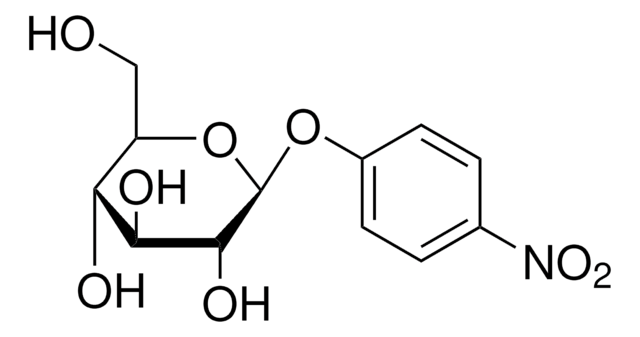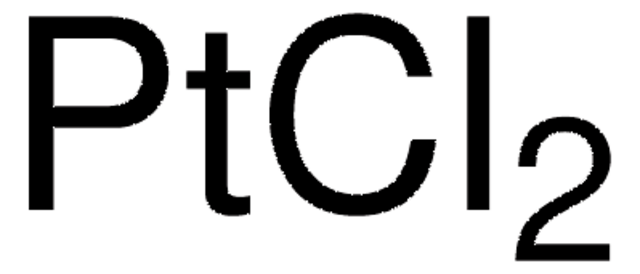P7082
Chloroplatinic acid hexahydrate
BioXtra
Synonim(y):
Hexachloroplatinic acid hexahydrate, Hydrogen hexachloroplatinate(IV) hexahydrate, Platinic chloride hexahydrate
About This Item
Polecane produkty
linia produktu
BioXtra
Postać
powder
stężenie
≥37.5% Pt (gravimetric)
zanieczyszczenia
≤0.005% Phosphorus (P)
≤0.1% Insoluble matter
rozpuszczalność
H2O: 0.5 M, clear, orange
ślady anionów
sulfate (SO42-): ≤0.05%
ślady kationów
Al: ≤0.0005%
Ca: ≤0.01%
Cu: ≤0.0005%
Fe: ≤0.001%
K: ≤0.005%
Mg: ≤0.005%
NH4+: ≤0.2%
Na: ≤0.01%
Pb: ≤0.001%
Zn: ≤0.0005%
temp. przechowywania
room temp
ciąg SMILES
O.O.O.O.O.O.Cl.Cl.Cl[Pt](Cl)(Cl)Cl
InChI
1S/6ClH.6H2O.Pt/h6*1H;6*1H2;/q;;;;;;;;;;;;+4/p-4
Klucz InChI
PIJUVEPNGATXOD-UHFFFAOYSA-J
Szukasz podobnych produktów? Odwiedź Przewodnik dotyczący porównywania produktów
Zastosowanie
- Pt decorated MoS(2) nanoflakes for ultrasensitive resistive humidity sensor: This study explores the use of chloroplatinic acid hexahydrate as a precursor for depositing platinum on MoS2 nanoflakes, enhancing their performance in humidity sensing applications (Burman et al., 2018).
Hasło ostrzegawcze
Danger
Zwroty wskazujące rodzaj zagrożenia
Zwroty wskazujące środki ostrożności
Klasyfikacja zagrożeń
Acute Tox. 3 Oral - Eye Dam. 1 - Resp. Sens. 1 - Skin Corr. 1B - Skin Sens. 1
Kod klasy składowania
6.1C - Combustible acute toxic Cat.3 / toxic compounds or compounds which causing chronic effects
Klasa zagrożenia wodnego (WGK)
WGK 1
Temperatura zapłonu (°F)
Not applicable
Temperatura zapłonu (°C)
Not applicable
Środki ochrony indywidualnej
Eyeshields, Faceshields, Gloves, type P3 (EN 143) respirator cartridges
Certyfikaty analizy (CoA)
Poszukaj Certyfikaty analizy (CoA), wpisując numer partii/serii produktów. Numery serii i partii można znaleźć na etykiecie produktu po słowach „seria” lub „partia”.
Masz już ten produkt?
Dokumenty związane z niedawno zakupionymi produktami zostały zamieszczone w Bibliotece dokumentów.
Klienci oglądali również te produkty
Nasz zespół naukowców ma doświadczenie we wszystkich obszarach badań, w tym w naukach przyrodniczych, materiałoznawstwie, syntezie chemicznej, chromatografii, analityce i wielu innych dziedzinach.
Skontaktuj się z zespołem ds. pomocy technicznej










